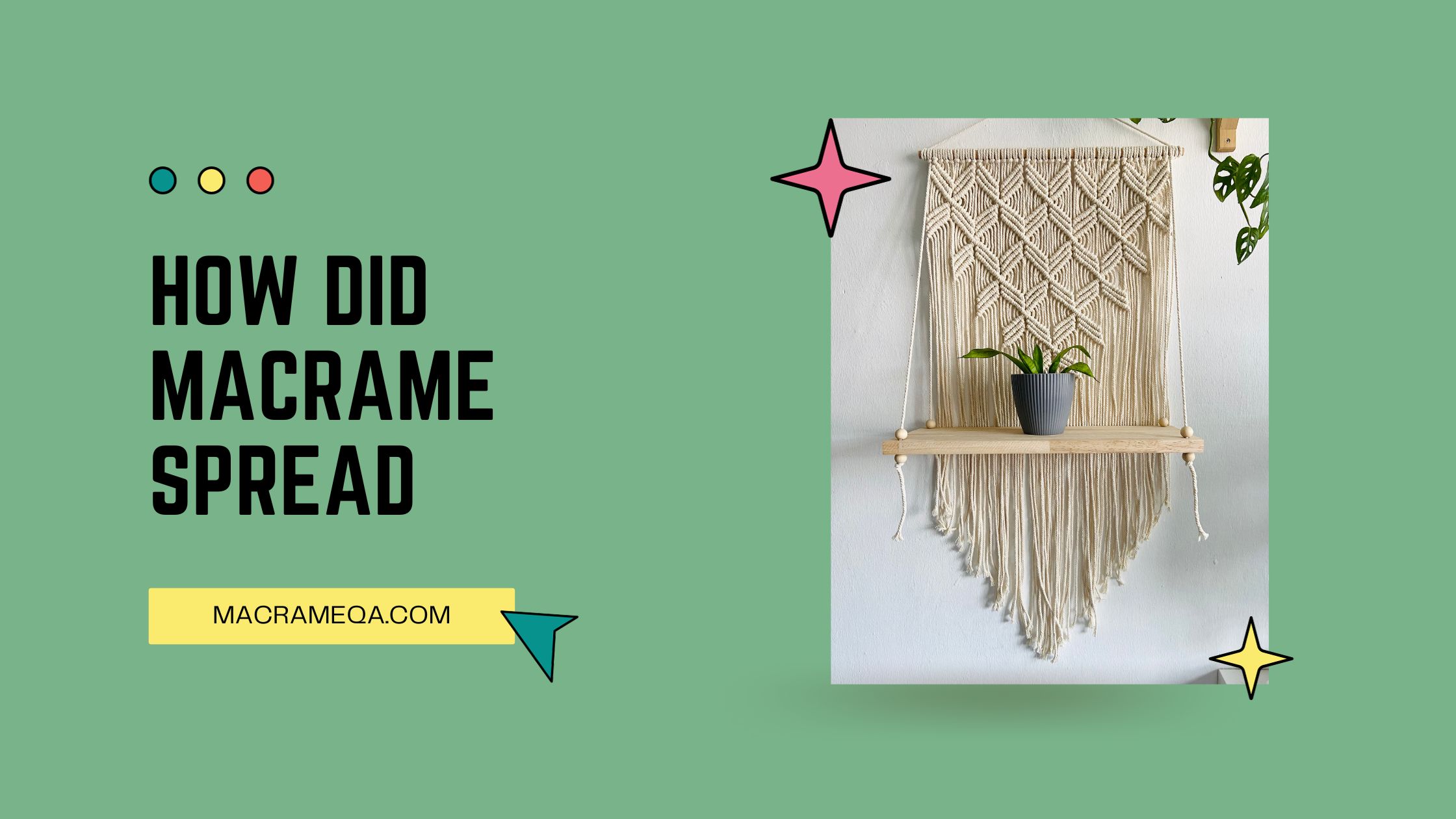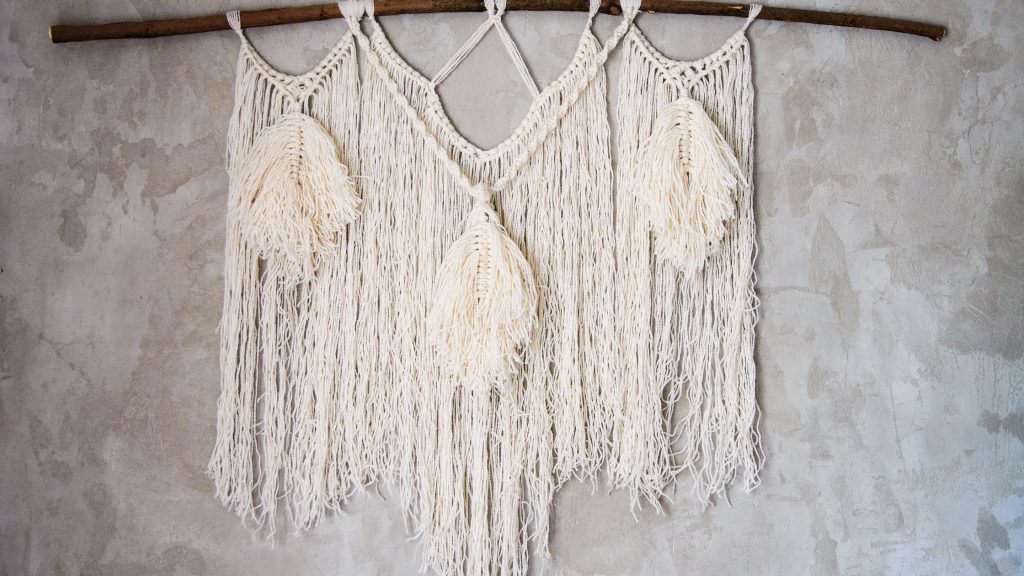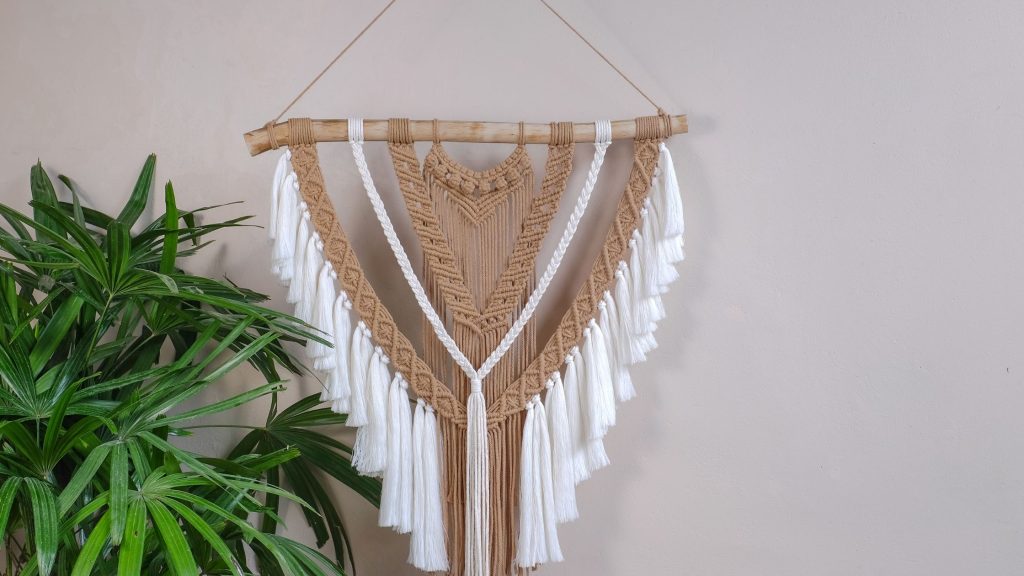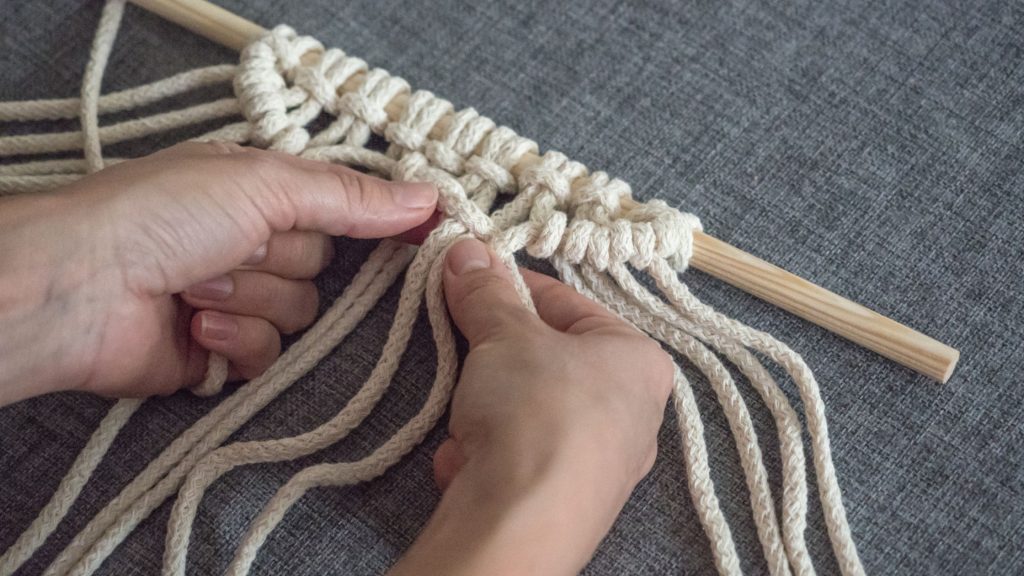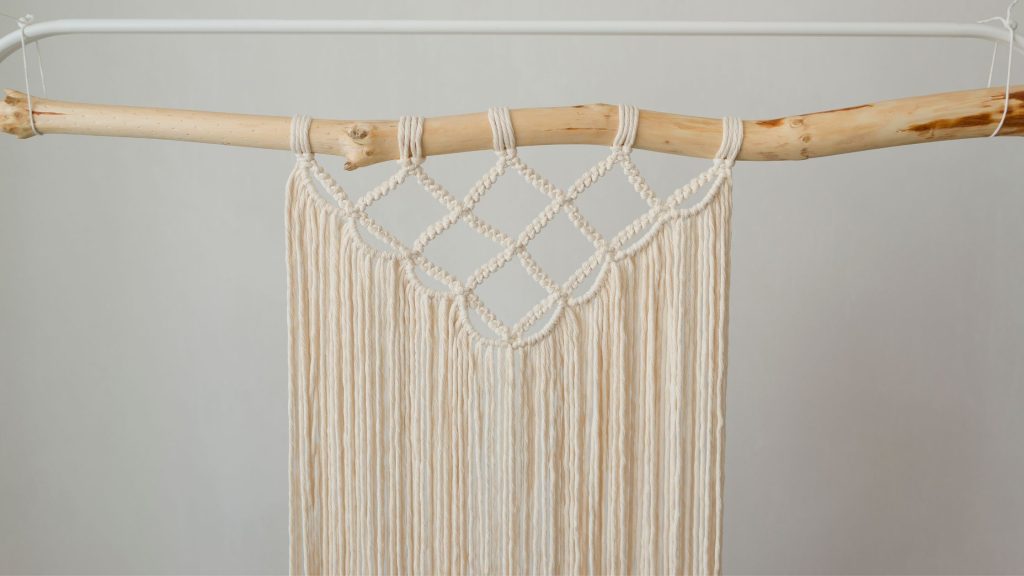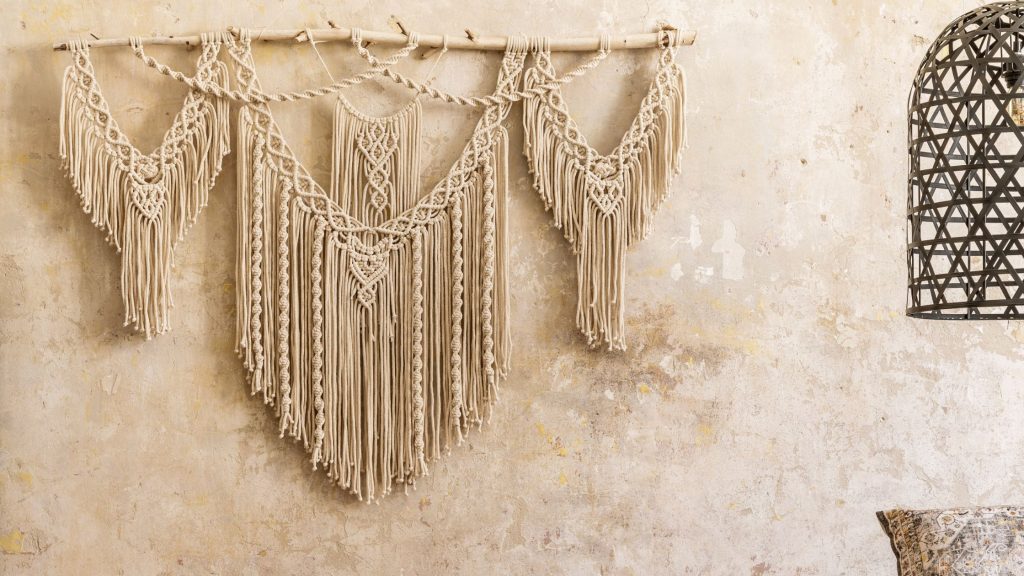Did you know that the art of macrame, with its intricate knotting and beautiful designs, was not initially born in the Americas? Macrame, which is believed to have originated in the Middle East, made its way to the Americas through various channels. From ancient trade routes to the influence of maritime explorers, the history of macrame is intertwined with the fascinating stories of cultural exchange. Discover the captivating journey of how macrame spread to the Americas and became a beloved art form in this article.
The Origins of Macrame
Ancient Origins of Macrame
Macrame, an art form that involves knotting cords together to create decorative patterns, has a long and fascinating history. While its exact origins are difficult to trace, evidence suggests that macrame was practiced by various ancient civilizations. The earliest known examples of macrame can be found in the decorative fringes of Babylonian and Assyrian textiles dating back to the 13th century BCE. It is believed that this intricate knotting technique spread throughout the ancient civilizations of China, Egypt, and Persia.
Introduction to Macrame
Macrame gained widespread popularity during the Arab conquests of North Africa and Spain in the 8th century. The Moors, who were skilled weavers and knot-makers, introduced macrame to Europe during their occupation of Spain. The word “macrame” itself is derived from the Arabic word “miqramah,” which means “fringe” or “ornamental fringe.” Over time, macrame became a popular art form in European countries, particularly in France and England.
Various Uses of Macrame
Throughout history, macrame has served a multitude of purposes. In ancient times, it was primarily used for decorative purposes, adorning clothing, curtains, and textiles. Macrame was also employed in the creation of fishing nets and hammocks, due to its strength and durability. In more recent years, macrame has found its way into various forms of art, interior design, and fashion.
Exploration and Colonization
European Voyages to the Americas
The spread of macrame to the Americas can be traced back to the European voyages of exploration and colonization during the 15th and 16th centuries. Explorers such as Christopher Columbus and Hernán Cortés encountered new cultures and civilizations, including indigenous peoples who had their own established weaving and knotting techniques.
Craftsmanship on the Ships
During these voyages, sailors played a crucial role in the diffusion of macrame to the Americas. They spent long periods at sea, often utilizing their time to engage in various crafts, including macrame. The sailors learned and practiced different knotting techniques, incorporating them into their daily lives on the ships.
Introduction of Macrame to the Americas
As European explorers and colonizers reached the shores of the Americas, they brought with them their knowledge of macrame. The arrival of these craftsmen, along with their knowledge and skills, led to the introduction of macrame to indigenous communities. Through interaction and cultural exchanges, macrame became intertwined with the indigenous craft traditions of the Americas.
Indigenous Influence
Interaction between Indigenous Peoples and Explorers
When European explorers encountered indigenous peoples in the Americas, they were exposed to a wealth of cultural diversity. This interaction facilitated the exchange of ideas, techniques, and materials between the two groups. As a result, macrame techniques and designs began to merge with the indigenous weaving traditions, creating a unique blend of craftsmanship.
Exchange of Craft Techniques
The indigenous peoples of the Americas had their intricate weaving techniques, such as finger weaving and backstrap weaving. These techniques, combined with the knotting skills brought by the European explorers, led to the development of new macrame techniques. The indigenous artisans quickly adapted and incorporated macrame into their existing craft practices, giving rise to distinctive regional styles.
Adoption of Macrame by Indigenous Communities
As macrame spread among indigenous communities, it became deeply ingrained in their cultural practices. Macrame was not only utilized for functional purposes, such as creating bags and garments, but also held symbolic significance in rituals, ceremonies, and artwork. It became an integral part of indigenous identities and was passed down through generations as a traditional craft.
Popularization in the Colonies
Macrame in Colonial Trade and Exchanges
During the colonial period, macrame experienced a surge in popularity as a trade commodity. European colonizers recognized the commercial value of macrame and encouraged its production among the indigenous communities. Macrame goods, including intricate lacework and decorative cords, were exported back to Europe, contributing to the economic development of the colonies.
Macrame in Colonial Decor and Fashion
Macrame also played a significant role in colonial decor and fashion. It adorned the interiors of colonial homes, adding an element of elegance and sophistication. Macrame curtains, plant hangers, and wall hangings became fashionable items among the European settlers. The versatility and beauty of macrame made it a sought-after craft in both everyday life and special occasions.
Influence of Macrame on European Craftsmanship
The introduction of macrame to the Americas had a profound impact on European craftsmanship. The exchange of ideas and techniques between the colonies and Europe inspired European artisans to incorporate macrame into their artistic practices. It influenced various art forms, including lace-making, embroidery, and tapestry, giving rise to new and intricate designs.
Spread through Maritime Trade
Maritime Routes and Trade Networks
The spread of macrame was further facilitated through maritime trade routes. As trade networks expanded across the globe, macrame became a sought-after commodity in different regions. The exchange of goods and cultural influences shaped the development and diversification of macrame techniques and styles.
Macrame as a Trade Commodity
Macrame, with its intricate designs and durability, became an important trade commodity during the era of maritime exploration and colonization. It was exported to various countries and woven into the fabric of different cultures. Macrame items, such as jewelry, wall hangings, and clothing embellishments, were highly valued in international markets, contributing to the global diffusion of the craft.
Influence of Macrame in Different Regions
As macrame traveled along trade routes, it left its mark on different regions, impacting local craft traditions. Each culture infused its unique aesthetic and design elements into macrame, giving rise to diverse regional styles. For example, in Southeast Asia, macrame techniques merged with local textile traditions, resulting in the creation of intricate beadwork and textile artistry.
Revival and Transformation
Revival of Macrame in Modern Times
After a period of decline, macrame experienced a revival in the late 19th and early 20th centuries. This resurgence was primarily driven by artists and craftsmen who sought to revive traditional knotting techniques and incorporate them into contemporary designs. Macrame became popular among the bohemian and hippie movements, celebrated for its natural and handmade aesthetics.
Macrame in Bohemian and Hippie Movements
During the 1960s and 1970s, macrame became closely associated with the bohemian and hippie counterculture. It represented a rejection of mass-produced consumer goods and a return to artisanal craftsmanship. Macrame plant hangers, wall hangings, and clothing adorned the homes and bodies of the free-spirited individuals who embraced the movement.
Contemporary Adaptations of Macrame
In modern times, macrame has undergone further transformations, blending traditional techniques with contemporary design sensibilities. The craft has expanded beyond its decorative origins and is now utilized in various forms of fiber art, including sculptural installations and wearable art. Macrame artists continue to push the boundaries of the craft, experimenting with new materials and techniques.
Macrame in Indigenous Cultures
Macrame Traditions in Native American Cultures
Within indigenous cultures of the Americas, macrame has remained an integral part of artistic expressions and cultural practices. Native American communities have preserved and passed down traditional macrame techniques through generations, ensuring the continuation of their rich craft heritage. Macrame is often incorporated into regalia, items of personal adornment, and ceremonial objects.
Incorporation of Macrame into Rituals and Arts
Macrame holds significant cultural and spiritual meaning within indigenous communities. It is utilized in various rituals, ceremonies, and artistic endeavors. Macrame patterns and designs are imbued with symbolism, reflecting the interconnectedness of nature, spirituality, and community.
Preservation and Reclamation of Macrame Techniques
In recent years, there has been a renewed focus on preserving and reclaiming indigenous macrame techniques. Indigenous artisans and organizations are working collaboratively to document and revive traditional macrame practices. These efforts not only serve to safeguard cultural heritage but also provide economic opportunities and empowerment for indigenous communities.
Macrame in Latin America
Macrame in Pre-Columbian Civilizations
Macrame techniques have ancient roots in Latin America, dating back to pre-Columbian civilizations such as the Inca, Maya, and Aztecs. These civilizations developed sophisticated weaving and knotting methods using plant fibers, creating intricate textiles that showcased their advanced craftsmanship.
Adoption and Adaptation of Macrame in Latin American Countries
Macrame continued to evolve in Latin America after the arrival of the Spanish colonizers. The indigenous peoples of the region incorporated European macrame techniques into their existing weaving traditions, resulting in a fusion of styles. Each Latin American country developed its unique macrame designs, reflecting the diverse cultural heritage of the region.
Macrame in Latin American Culture Today
Today, macrame remains an important part of Latin American culture. It can be seen in traditional garments, home decor items, and artisanal crafts. Latin American artisans have skillfully preserved and passed down macrame techniques, ensuring the continuity of this ancient art form for future generations.
Macrame’s Influence on Modern Crafts
Macrame in Contemporary Fiber Art
Macrame has experienced a resurgence in contemporary fiber art, with artists pushing the boundaries of the craft and experimenting with new materials and techniques. Macrame installations, sculptures, and wall hangings have become prominent features in art exhibitions and galleries worldwide. The versatility of macrame allows artists to create intricate and visually stunning pieces that captivate viewers.
Macrame Tutorials and DIY Culture
The rise of the internet and social media platforms has fueled the popularity of macrame tutorials and do-it-yourself (DIY) culture. Online platforms provide accessible resources for individuals to learn macrame techniques and create their pieces. Macrame enthusiasts can connect, share their creations, and inspire a new generation of makers.
Macrame’s Popularity in Home Decor
Macrame’s aesthetic appeal and versatility have made it a popular choice in contemporary home decor. Macrame wall hangings, plant holders, and curtains add a touch of bohemian elegance to interior spaces. The natural fibers used in macrame creations contribute to a sense of warmth and coziness, making it a favored choice among interior designers and homeowners alike.
Macrame as a Global Craft
Macrame in Different Cultural and Artistic Contexts
Macrame has transcended cultural boundaries and found a place in various artistic and cultural contexts around the world. It has been adapted and integrated into the artistic practices of different cultures, creating a truly global craft. Each culture brings its unique perspective, resulting in a rich tapestry of macrame traditions that continue to evolve.
Macrame Workshops and Communities
Macrame workshops and communities have emerged globally, providing a space for enthusiasts to learn, practice, and share their passion for the craft. These workshops allow participants to explore different macrame techniques, gain inspiration, and connect with a supportive community of fellow makers. Macrame enthusiasts, whether beginners or experienced artists, can find opportunities for creative growth and collaboration.
Exploration of Macrame’s Future
As macrame continues to evolve and adapt, the future of the craft holds endless possibilities. Artists and artisans are exploring innovative ways to incorporate macrame into various fields, including fashion, architecture, and product design. Macrame’s enduring appeal and timeless beauty ensure its place as a beloved craft for generations to come.

